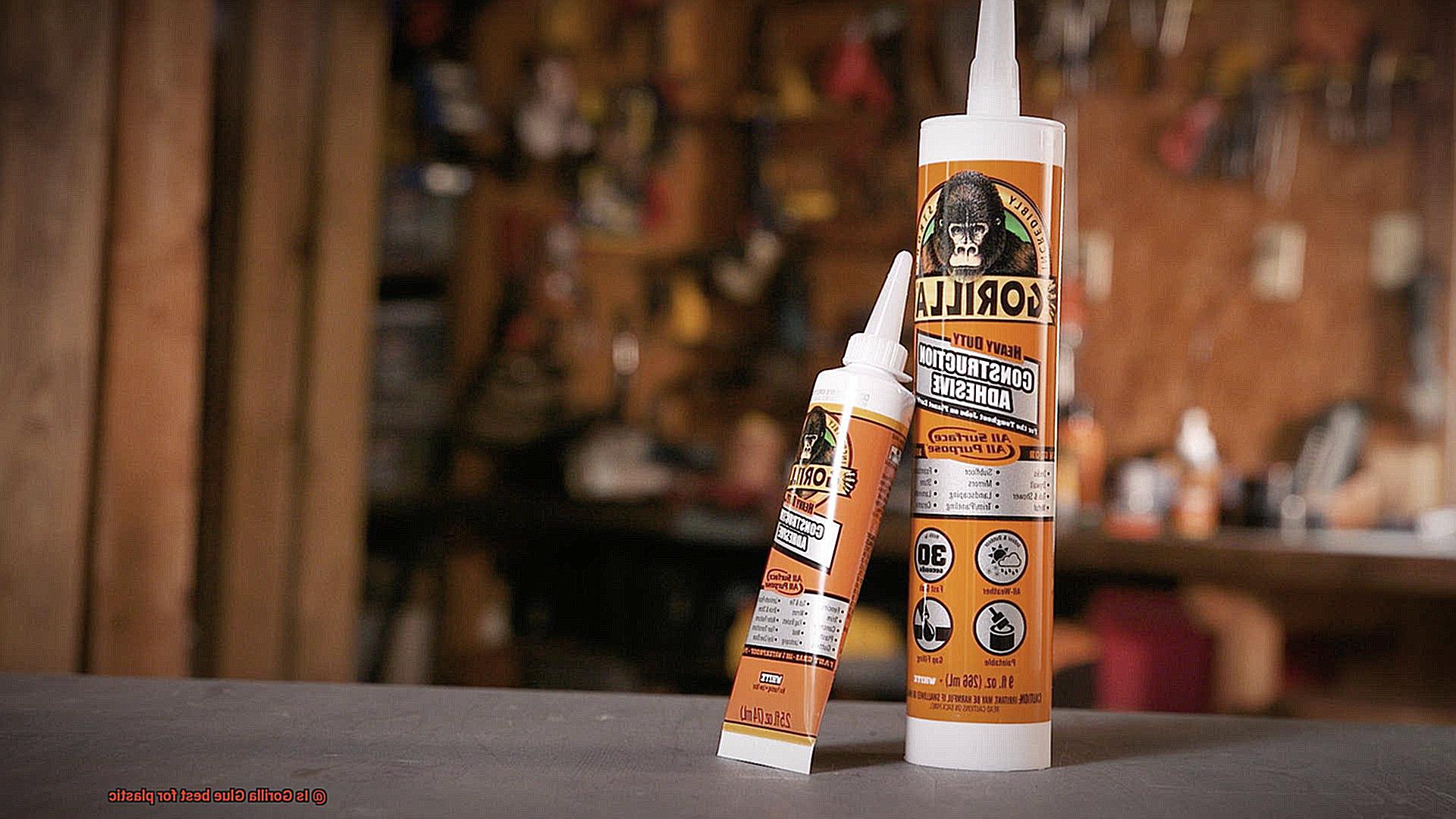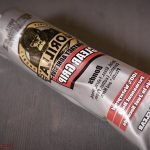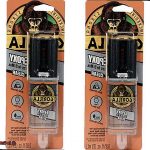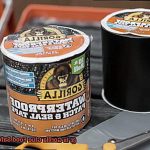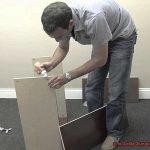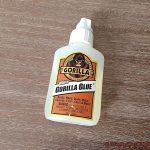Picture this: a broken plastic toy, a cracked electronic casing, or a severed pipe desperately in need of repair. In times like these, adhesive products come to the rescue, saving us from the brink of despair.
And when it comes to bonding plastic, one name stands out among the rest – Gorilla Glue. This adhesive sensation has garnered a loyal following for its strength and versatility.
But is Gorilla Glue truly the ultimate fix for plastic? Buckle up as we dive into the pros and cons of using Gorilla Glue for plastic repairs. Get ready to become an expert in all things sticky.
Advantages of Gorilla Glue for Plastic:
Contents
- 1 Advantages of Gorilla Glue for Plastic:
- 2 Disadvantages of Gorilla Glue for Plastic:
- 3 Types of Plastics Gorilla Glue Can Bond
- 4 Factors to Consider When Using Gorilla Glue on Plastic
- 5 Surface Preparation for Plastic Bonding
- 6 Applying Gorilla Glue to Plastic
- 7 Curing and Drying Times for Gorilla Glue
- 8 Advantages of Using Gorilla Glue on Plastic
- 9 Disadvantages of Using Gorilla Glue on Plastic
- 10 Alternatives to Gorilla Glue for Plastic Bonding
- 11 Conclusion
- Unmatched Strength: When it comes to durability, Gorilla Glue takes the crown. It forms an unbreakable bond that can withstand even the toughest stress conditions. So whether you’re fixing a shattered toy or patching up a water pipe disaster, this adhesive has got your back.
- Versatility at Its Finest: Not only does Gorilla Glue work wonders with plastic, but it also plays well with other materials like wood, metal, fabric – you name it. With this adhesive by your side, you’ll have one solution for all your repair needs.
- Defying Mother Nature: Rain or shine, hot or cold – nothing can stop Gorilla Glue from doing its magic on plastics. Designed to resist moisture and temperature fluctuations, this glue ensures that your repaired items stay intact no matter what nature throws their way.
Disadvantages of Gorilla Glue for Plastic:
- The Expanding Dilemma: Here’s where things get a little tricky. While Gorilla Glue’s expanding nature helps create a strong bond, it can cause trouble when working with delicate plastic parts. The foam-like expansion might apply too much pressure, leading to damage or misalignment of your precious repairs.
- The Mess Factor: Brace yourself for a potentially messy affair. Before applying Gorilla Glue, you need to moisten the surface for activation. While this step is crucial for optimal bonding, it can turn into a sticky situation, especially when dealing with intricate plastic pieces.
- Time Waits for No One: Patience is a virtue they say, and it’s definitely put to the test with Gorilla Glue. Unlike speedy adhesives on the market, this glue takes its sweet time
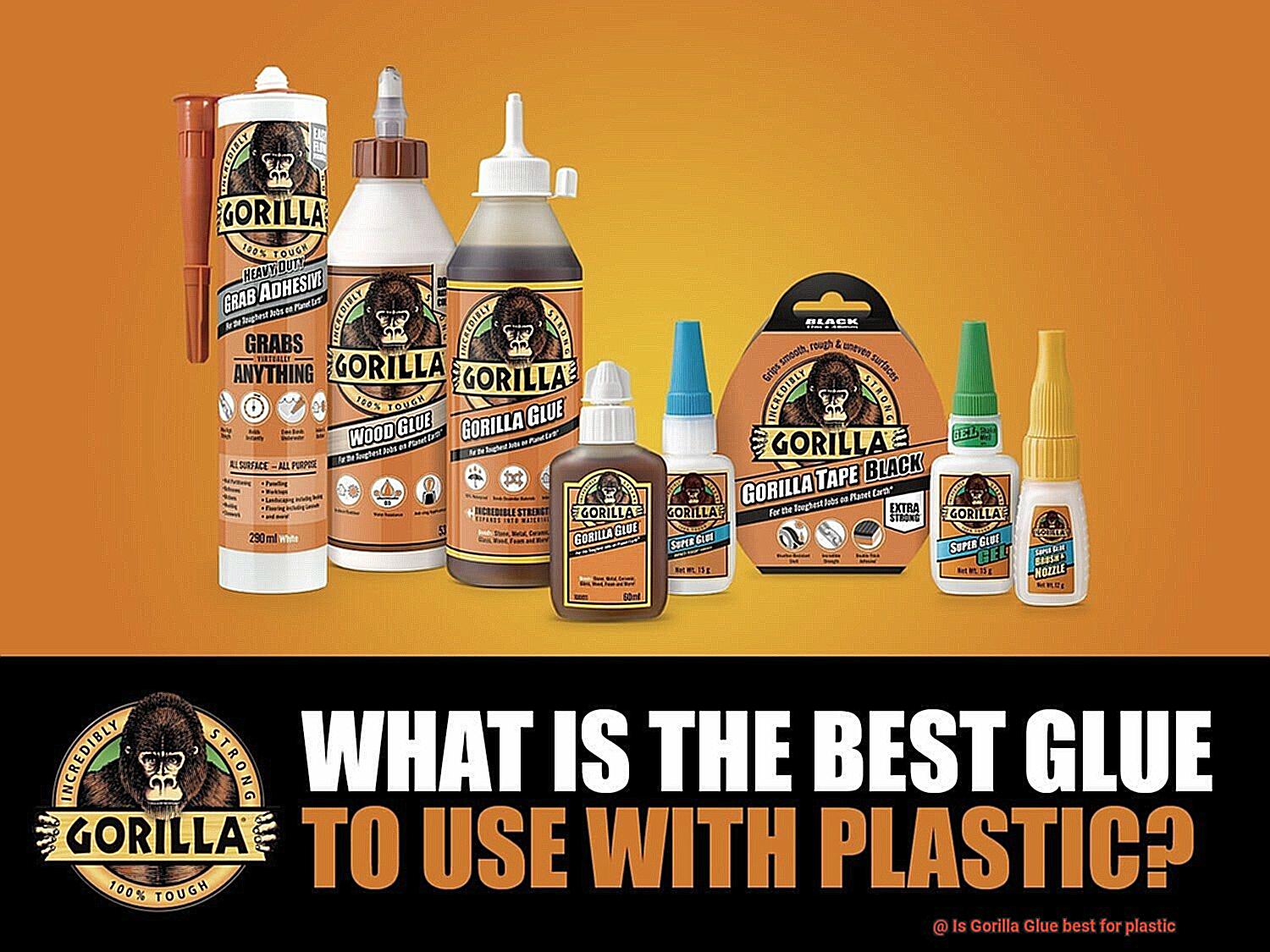
Types of Plastics Gorilla Glue Can Bond
Gorilla Glue is a super strong adhesive that can bond to a variety of materials, including plastic. However, not all plastics are the same, and some may pose challenges when it comes to bonding. In this article, we will explore the types of plastics that Gorilla Glue can effectively bond and provide tips for achieving optimal results.
Polyethylene – The Slippery Plastic:
Polyethylene is a widely used plastic found in products such as plastic bags, bottles, and toys. It has a low surface energy, making it difficult for adhesives to adhere to. However, Gorilla Glue is specially formulated to bond with polyethylene. Its unique chemical composition allows it to penetrate the surface and create a strong bond. Whether you need to repair a broken toy or attach something to a plastic bag, Gorilla Glue is up to the task.
Polypropylene – The Tough Plastic:
Polypropylene is another type of plastic that Gorilla Glue can bond effectively. It is commonly found in food containers, automotive parts, and medical devices. Like polyethylene, polypropylene has a low surface energy that makes it challenging for adhesives to stick to. However, Gorilla Glue’s strong bonding capabilities allow it to overcome this hurdle. So whether you need to fix a cracked food container or repair a medical device, Gorilla Glue is the go-to adhesive.
PVC – The Pipe Plastic:
PVC (polyvinyl chloride) is a versatile plastic used in various applications such as plumbing pipes and window frames. Gorilla Glue can bond well with PVC due to its unique chemical composition. When applied correctly, Gorilla Glue forms a durable and long-lasting bond with PVC surfaces. So the next time you have a leaky pipe or need to repair a broken window frame, reach for Gorilla Glue to get the job done.
ABS – The Strong Plastic:
ABS (acrylonitrile butadiene styrene) is a strong and durable plastic used in automotive parts, computer keyboards, and even LEGO bricks. Gorilla Glue is known for its ability to bond well with different surfaces, including ABS. Its strong adhesive properties allow it to create a lasting bond with this tough plastic. Whether you accidentally broke your favorite toy car or your computer keyboard is falling apart, Gorilla Glue can come to the rescue.
Polycarbonate – The Clear Plastic:
Polycarbonate is a transparent plastic commonly used in products such as eyeglass lenses, safety goggles, and bulletproof glass. Gorilla Glue can form a strong bond with polycarbonate due to its adhesive properties. By following the proper surface preparation and application techniques, you can rely on Gorilla Glue to fix your broken glasses or repair your safety goggles effectively.
Factors to Consider When Using Gorilla Glue on Plastic
Whether it’s a cracked phone case or a broken toy, Gorilla Glue might just be the solution you’ve been looking for. But before you start gluing everything in sight, there are a few important factors to consider when using Gorilla Glue on plastic.
First and foremost, compatibility is key. Not all plastics are created equal, and some may not bond well with certain types of glue. Take a moment to identify the specific type of plastic you’re working with and check if Gorilla Glue is recommended for use on that particular plastic. You don’t want to find out the hard way that the glue and plastic just won’t get along.
Next, make sure your surface preparation game is strong. A clean, dry, and contaminant-free surface is crucial for achieving a strong bond. Before applying the glue, take the time to clean the plastic surface and remove any dirt, grease, or other debris. You can even lightly sand the surface or roughen it up with a scraper to improve adhesion. Trust me, a little extra effort in this step goes a long way.
When it comes to applying the glue, technique matters. Apply the glue evenly and in the right amount. Too much or too little can affect the bond strength, so finding that sweet spot is important. And remember, don’t put too much pressure during the bonding process. You don’t want to stress out your plastic and risk causing damage.
Now let’s talk drying time. Gorilla Glue requires moisture to activate its bonding properties, but you also need to give it enough time to cure properly. The drying time may vary based on factors like temperature and humidity, so be patient and resist the urge to disturb or stress the bonded plastic until the glue has fully cured.
Temperature resistance is another factor to consider. If your bonded plastic will be exposed to extreme temperatures, make sure the glue can handle it. Different plastics have different heat resistance properties, and some may not withstand high temperatures. You don’t want your bond to melt away when things heat up.
Flexibility is also worth a thought. Some plastics require flexibility, especially in applications where there may be movement or stress. While Gorilla Glue has some flexibility, it may not be suitable for all types of plastics that require high flexibility. Consider the intended use of your bonded plastic and make sure the glue can keep up.
Lastly, let’s talk longevity. Gorilla Glue is known for its strong bonding properties, but how long will that bond last? The answer depends on factors like the type of plastic, environmental conditions, and usage. Assess whether Gorilla Glue will provide a durable and long-lasting bond for your specific plastic application.
Surface Preparation for Plastic Bonding
Surface preparation is a crucial step when it comes to bonding plastic using Gorilla Glue or any other adhesive. Proper surface preparation ensures that the glue adheres well to the plastic and creates a strong bond.
The first step in surface preparation is cleaning the plastic surface thoroughly. Remove any dirt, dust, grease, or residue that may be lingering around. Mix a mild detergent or soap with warm water and gently scrub away. Avoid using harsh chemicals or solvents as they can harm your precious plastic.
Once your plastic is squeaky clean, it’s time to roughen things up a bit. Most plastics have a smooth and non-porous surface, making it difficult for glue to stick effectively. But fear not. Lightly sand the surface with fine-grit sandpaper to create microscopic scratches. These scratches provide more area for the glue to grip onto, ensuring a stronger bond.
After roughening the surface, remove any sanding debris or dust. You don’t want those pesky particles interfering with your bonding process. A quick wipe with a clean cloth or a blast of compressed air should do the trick.
Now here’s where things get interesting. Certain types of plastics like polyethylene or polypropylene have low surface energy, making them resistant to bonding. But don’t worry, we’ve got a secret weapon – primer. Yes, you heard me right. Using a primer specifically designed for bonding plastics can work wonders. It increases the surface energy of the plastic and allows for better adhesion of the glue. Just make sure to follow the manufacturer’s instructions and let that primer dry completely before applying the glue.
Last but not least, consider the temperature and humidity conditions during surface preparation and bonding. Aim for a temperature between 65°F and 75°F (18°C and 24°C) and keep the humidity below 50%. Extreme temperatures or high humidity conditions can mess with the quality of your bond, so avoid those like the plague.
Applying Gorilla Glue to Plastic
In this comprehensive guide, we will walk you through the steps of applying Gorilla Glue to plastic, ensuring a secure and long-lasting bond that can withstand the test of time.
Step 1: Research Your Plastic:
Before diving into the gluing process, it’s essential to know your plastic. Not all plastics are compatible with Gorilla Glue, so identifying the type of plastic you are working with is crucial. Some plastics that bond well with Gorilla Glue include polyethylene, polypropylene, PVC, ABS, and acrylic. However, low surface energy plastics like PTFE and silicone may not adhere as effectively.
Step 2: Preparation is Key:
To ensure a strong bond, prepare the plastic surface properly. Start by thoroughly cleaning it to remove any dust, dirt, or oils that could hinder the bonding process. A mild detergent or rubbing alcohol can be used for cleaning. Additionally, lightly sanding or roughening the surface with fine-grit sandpaper enhances adhesion.
Step 3: Apply Gorilla Glue:
When applying Gorilla Glue to plastic, remember that less is more. Use a thin layer of glue rather than excessive amounts. This ensures even distribution and minimizes the risk of overflow. Keep in mind that Gorilla Glue expands as it cures, so too much glue can lead to messy results.
Step 4: Clamp it Down:
For a strong and secure bond, firmly clamp the plastic pieces together after applying the glue. This step ensures that the adhesive fully adheres to the surfaces and creates a tight connection. If clamping is not feasible due to the shape or size of your project, consider using heavy objects or tape to hold the pieces in place.
Step 5: Allow for Proper Curing Time:
Patience is key. Allow the glued plastic pieces to cure undisturbed for at least 24 hours. The curing time may vary based on environmental conditions, so refer to the instructions on the Gorilla Glue packaging. Rushing this step can compromise the strength of the bond.
Step 6: Test and Enjoy:
Once the glue has fully dried, it’s time to test the bond. Gently apply light pressure to the joint to ensure it feels secure and holds up well. If the bond passes this test, congratulations. You’ve successfully bonded your plastic materials using Gorilla Glue. However, if you encounter any issues or if the bond isn’t strong enough, consider exploring alternative adhesives specific to your plastic type.
Curing and Drying Times for Gorilla Glue
Embark on a journey into the world of Gorilla Glue as we delve into the nitty-gritty details of curing and drying times for this renowned adhesive. Whether you’re a DIY enthusiast or a professional craftsman, understanding the nuances of Gorilla Glue can make all the difference in your projects. Let’s explore the types of Gorilla Glue, factors affecting curing and drying times, and tips for achieving maximum strength bonds.
Types of Gorilla Glue:
Gorilla Glue offers a range of adhesives specifically designed for plastic bonding. These include:
- Gorilla Super Glue Gel: Perfect for quick repairs or small projects, this type dries within minutes, providing a strong bond on various plastics.
- Gorilla Clear Grip: With its crystal-clear formula, this glue is ideal for transparent or light-colored plastics. It sets in about 10-45 seconds and reaches maximum strength in 24 hours.
- Gorilla Epoxy: Often preferred for larger or more complex projects, this adhesive offers a longer working time before setting. It typically takes around 24 hours to fully cure and form a durable bond.
Factors Affecting Curing and Drying Times:
- Type of Glue: The curing and drying times depend on the specific Gorilla Glue being used. Quick-drying glues like Super Glue Gel may dry within minutes, while epoxy glues require longer curing times.
- Environmental Conditions: Moisture is crucial for Gorilla Glue’s effective curing process. Slightly dampening the surfaces to be bonded before applying the glue helps facilitate bonding. Additionally, humidity and temperature play a role in curing and drying times. Higher humidity levels may accelerate the process, while lower temperatures can slow it down.
Tips for Achieving Maximum Strength Bonds:
- Allow Sufficient Curing Time: Patience is key when using Gorilla Glue. Rushing the curing process may result in a weaker bond that is prone to failure. To ensure maximum strength, follow the manufacturer’s instructions and allow the glue to cure fully before subjecting it to stress or strain.
- Controlled Environment: Maintain a controlled environment with adequate ventilation during the curing process. Avoid extreme temperature fluctuations, as they can affect the bonding process. This ensures optimal curing and drying times.
Advantages of Using Gorilla Glue on Plastic
With its exceptional strength, water resistance, versatility, and ease of use, Gorilla Glue offers several key advantages when working with plastic. In this article, we will explore why using Gorilla Glue on plastic is the best option for your bonding needs.
Unrivaled Strength:
Gorilla Glue is renowned for its superior bonding strength, creating an unbreakable bond between plastic surfaces. Whether you need to repair a broken plastic item or create a strong bond for a project, Gorilla Glue ensures durability and longevity.
Waterproof Properties:
Moisture can weaken adhesive bonds over time, but Gorilla Glue is specifically designed to be water-resistant. This feature makes it an excellent choice for both indoor and outdoor applications where the bonded plastic may be exposed to wet or humid conditions.
Versatility:
Gorilla Glue is compatible with various types of plastics, including PVC, acrylic, polycarbonate, and more. This versatility makes it suitable for a wide range of projects, allowing you to confidently bond different plastic materials with ease.
Fills Gaps:
One of the standout features of Gorilla Glue is its ability to expand as it cures. This expansion allows the adhesive to fill in gaps and create a strong bond even on uneven or irregular plastic surfaces. No matter the shape or condition of the plastic, Gorilla Glue ensures a tight and secure connection.
Temperature Resistance:
Gorilla Glue can withstand extreme temperatures without compromising its bond. Whether exposed to scorching heat or freezing cold, this adhesive maintains its strength and integrity, making it ideal for applications where temperature fluctuations are a concern.
Clear Finish:
Gorilla Glue dries clear, leaving no visible residue on the plastic surface. This is particularly important for projects that require a clean and professional appearance. With Gorilla Glue, your hard work will shine through without any unsightly adhesive marks.
User-Friendly and Long-Lasting:
Gorilla Glue is designed with ease of use in mind. It comes in various forms, such as liquid or gel, allowing you to choose the one that suits your application best. Applying it is simple, whether by brush, applicator tip, or spreading it evenly on the plastic surface. Once cured, the bond created by Gorilla Glue is resistant to impact, moisture, and chemicals, ensuring long-term durability.
Disadvantages of Using Gorilla Glue on Plastic
If you’re a glue aficionado, you’ve probably heard of the mighty Gorilla Glue. Renowned for its strength and versatility, it has become a go-to adhesive for various materials. However, when it comes to plastic, this superhero of glues may not be your best sidekick. In this blog post, we’ll explore the disadvantages of using Gorilla Glue on plastic surfaces.
Expanding Nature:
Imagine this scenario: you carefully apply Gorilla Glue to your delicate plastic masterpiece, only to watch in horror as it expands like a mad scientist’s experiment gone wrong. Gorilla Glue is a polyurethane adhesive that expands as it cures, creating a foamy texture. While this expansion can be advantageous for certain materials, it can warp or distort delicate plastics, leaving you with a ruined project.
Long Curing Time:
They say patience is a virtue. However, if you’re in a hurry to complete your project or need quick repairs, Gorilla Glue might test your patience. It requires moisture to activate and cure effectively, which can be challenging on smooth and non-porous plastic surfaces. Waiting up to 24 hours or more for the glue to set can cause frustration and delays.
Removal Challenges:
Mistakes happen, even to the most seasoned DIYers. But removing Gorilla Glue from plastic surfaces is no easy feat. Its strong adhesive properties make it difficult to remove without damaging the plastic. You might end up resorting to scraping or using solvents, compromising the integrity of your plastic masterpiece.
Compatibility Issues:
Not all plastics are created equal when it comes to bonding with Gorilla Glue. Certain plastics, like polypropylene and polyethylene, have low surface energy, making it tough for any adhesive to form a strong bond. Gorilla Glue may not adhere effectively to these plastics, resulting in weak bonds or no bonding at all.
Cost Considerations:
While Gorilla Glue is undeniably a fantastic adhesive, its superpowers come at a cost. Compared to specialized adhesives designed specifically for bonding plastics, Gorilla Glue can be pricier. If you frequently work with plastic materials, investing in a glue tailored for plastic bonding might be a more cost-effective choice.
Alternatives to Gorilla Glue for Plastic Bonding
I’m here to introduce you to a whole world of fantastic alternatives that will make your plastic bonding projects a breeze.
First up on our list is the mighty epoxy resin. This two-part adhesive is a real powerhouse when it comes to bonding plastics. Just mix the two components together, apply it to your plastic surfaces, and watch the magic happen. Epoxy resin forms an incredibly strong bond that can withstand high temperatures, making it perfect for a variety of applications.
If you’re looking for something quick and easy, super glue is the answer. Also known as cyanoacrylate glue, this stuff bonds like there’s no tomorrow. It’s great for small repairs or bonding delicate plastic parts. Just be careful not to stick your fingers together – trust me, it’s not fun.
Now, let’s talk about those stubborn plastics that just won’t cooperate. Polyethylene and polypropylene, I’m looking at you. Don’t worry; we’ve got a specialized adhesive just for you – polyolefin adhesive. These adhesives are specifically designed to bond these types of plastics and provide excellent adhesion. Say goodbye to frustration and hello to a strong bond.
For all you acrylic lovers out there, we haven’t forgotten about you. Acrylic-based adhesives, such as acrylic cement or solvent-based adhesives, are perfect for bonding acrylic plastics. They provide a strong bond and will keep your projects looking sleek and professional.
But before you dive into any of these alternatives, there are a few factors to consider when choosing the right adhesive. First and foremost, think about the type of plastic you’re working with. Different plastics may require different adhesives for optimal bonding.
Next, consider the application requirements. Do you need a fast-drying adhesive, or can you wait for a longer curing time? Will your project be exposed to high temperatures? These factors will help you determine which adhesive is best suited for your needs.
Lastly, the strength of the bond is crucial. Some adhesives may provide a stronger bond than others, so consider the level of durability required for your project.
Always remember to read and follow the manufacturer’s instructions carefully. Proper surface preparation is key to achieving optimal bonding results. If you’re unsure about which adhesive to use, it’s a good idea to test different options on a small sample of the plastic material before committing to a specific adhesive for larger projects.
hu8sJBctzFc” >
Also Read: Does Gorilla Glue Work on Plastic?
Conclusion
After careful consideration and analysis, it is evident that Gorilla Glue is indeed the ultimate choice when it comes to bonding plastic materials.
Its exceptional strength and durability make it a superior adhesive for all your plastic-related projects. Whether you’re fixing a broken toy or creating a DIY masterpiece, Gorilla Glue’s reliable performance ensures long-lasting results.
With its unmatched ability to withstand harsh conditions and extreme temperatures, this adhesive proves its worth time and time again.

